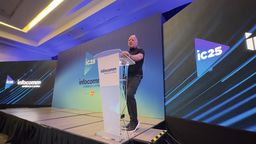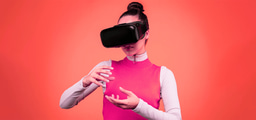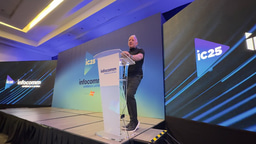Living Worlds: How Digital Twins Will Transform Immersive Experience Design and Maintenance

In the coming decade, immersive environments — from themed attractions to interactive exhibits — are poised for a quiet revolution. Behind the scenes of every projection-mapped castle, responsive audio installation, and sensor-driven interactive experience lies a complex web of technology that must perform flawlessly, day in and day out. Now, with the rise of Digital Twin technologies, these environments are about to become smarter, more sustainable, and more self-sustaining than ever before.
What is a Digital Twin?
At its core, a digital twin is a real-time, virtual replica of a physical system. It reflects how an environment behaves in the real world by collecting live data from sensors, controls, and user interactions, then modelling that data to simulate performance and predict outcomes. In themed entertainment, this means not just monitoring — but understanding — how a space evolves over time, how it’s used, and how it might respond under future conditions.
Why It Matters for Immersive Environments
Immersive experiences are fragile ecosystems. Projectors drift out of focus, speakers degrade, sensors misfire, and human usage rarely matches the original design assumptions. Traditionally, maintenance has been reactive — fix it when it breaks. But digital twins introduce the ability to be proactive, even predictive.
Let’s explore what this looks like across three key domains.
Projection, Media, and Visual Systems
Digital twins can simulate how projection mapping will look under different ambient lighting conditions or how visual media might degrade with a failing LED panel. Before a guest ever notices a dip in quality, the twin has flagged a service need. Want to preview a scenic upgrade or media change? Simulate it first in the twin to ensure content alignment, light levels, or even guest sightlines still hold.
By 2030, many venues will be using digital twins not just for maintenance, but for real-time optimisation — adapting brightness or content delivery based on crowd density or atmospheric shifts, all without operator input.
Immersive Audio and Soundscapes
Imagine a soundscape that evolves as the guest does — not just in response to movement, but to environmental conditions, occupancy, or narrative needs. A digital twin of the audio system can model reverberation, identify speaker failures, and automatically recalibrate levels based on ambient noise or acoustic interference.
Over time, this means sound design becomes a living layer, responsive and adaptive. Spatial audio systems linked to digital twins will deliver not just cleaner experiences, but deeply contextual ones — rebalancing or revoicing entire zones in real time.
Show Systems, Sensors, and Interactivity
Show control systems are often the hidden nervous system of an attraction. With a digital twin, operators can monitor these systems with granular insight: Are sensors misaligned? Is the lighting cue stack responding with latency under high load? Are there emerging inconsistencies in trigger patterns?
By 2032, control twins will likely incorporate AI to allow for “self-healing” sequences — systems that reroute around a faulty sensor or adjust interaction timing based on guest behaviours. Not only does this reduce downtime, it ensures smoother, more personalised experiences.
What Comes Next: A 10-Year View
From 2025 to 2035, we’ll see adoption grow steadily, with control systems leading the way in early digital twin integration, followed by visual and audio systems catching up as hardware becomes more networked and cloud-friendly. By the early 2030s, it’s likely that most Tier 1 immersive installations will maintain some form of operational digital twin.
This means:
- Shorter upgrade cycles thanks to virtual previews and testing.
- Better guest experiences through real-time performance tuning.
- Increased sustainability by extending the lifespan of expensive hardware and optimising energy use.
- Global remote support by allowing experts to diagnose and simulate from anywhere in the world.
A Living Environment
With digital twins, immersive experiences become living environments — capable of adapting, predicting, and even storytelling alongside guests. For designers and operators alike, it shifts the mindset from static delivery to dynamic evolution.
As the industry moves deeper into the age of intelligent environments, companies like Blue Alchemy Labs are ready to support projects by offering design expertise that aligns with these emerging technologies. Whether it’s through conceptual design, integration planning, or post-project support, we can help ensure your attraction is prepared to thrive in this new era of immersive experiences.
Would you like to learn more about how digital twins can enhance your next project? Let’s explore the possibilities together.
#DigitalTwins #ImmersiveExperiences #ThemedAttractions #InnovativeDesign #FutureOfEntertainment #ProjectionMapping #InteractiveExhibits #SmartTechnology #SustainableDesign #ImmersiveAudio #ShowControl #BlueAlchemyLabs
-
Xchange Advocates are recognized AV/IT industry thought leaders and influencers. We invite you to connect with them and follow their activity across the community as they offer valuable insights and expertise while advocating for and building awareness of the AV industry.






Please sign in or register for FREE
If you are a registered user on AVIXA Xchange, please sign in